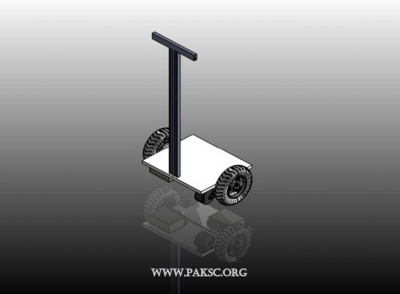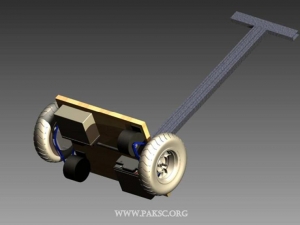Making an AM radio from simple components by Adil Malik
In this project I am going to make a simple AM Radio called a crystal set. Making an AM radio from simple components is actually very easy. I will tell you how AM radio works, and what are the basic steps required to make a receiver and then finally the circuit.
What is a radio?
“Radio is the transmission of signals through space by electromagnetic waves with frequencies from about 3 kHz to 300 GHz. These waves are called radio waves. Electromagnetic radiation travels by means of oscillating (moving back and forth) electromagnetic fields that pass through the air and the vacuum of space.”
Now in a quick summary, radios transmitter’s work by taking our sound waves which are weak and then combining those to a much power full electromagnetic wave called the “carrier wave.” This carrier wave can travel through the air at much greater distances. On the receiver side, this modulated or coded signal is decoded to remove the carrier wave from the audio, this only leaves our voice which is later played on a speaker. All radios work on this basic principle, the only difference is how they manipulate the carrier wave to transport our sound.
Am Radios:
AM stands for amplitude modulation. Amplitude means: The maximum difference of an alternating electrical current or potential from the average value. Seems complicated? Well it isn’t, the amplitude of a radio wave or any electromagnetic wave or even a signal is in simple words, how high or how low it hits a certain voltage. For example we have AC current in our houses. In Pakistan we can say that this current has an amplitude of +/- 220v.
Now the second part of AM stands for Modulation meaning: To adjust or adapt. This tells us that the amplitude of the carrier wave for broadcasting is modified to transmit or “carry” our sound/signal.
AM radios have a typical frequency range of 520 kHz–1,610 kHz. That means we can use electromagnetic waves of these frequencies as the carrier wave to transmit our sound. So in simple
words in AM radios, the amplitude (shape) of an electromagnetic wave is modified or distorted to transmit our signals.
Tuner: picks out the frequency we want to listen to and discards the others.
Decoder: Recall that our audio is mixed with the carrier wave. This removes the carrier wave so that we are only left with pure audio.
Amplifier: amplifies the sound signal so that it could be played on a speaker.
readmore









































